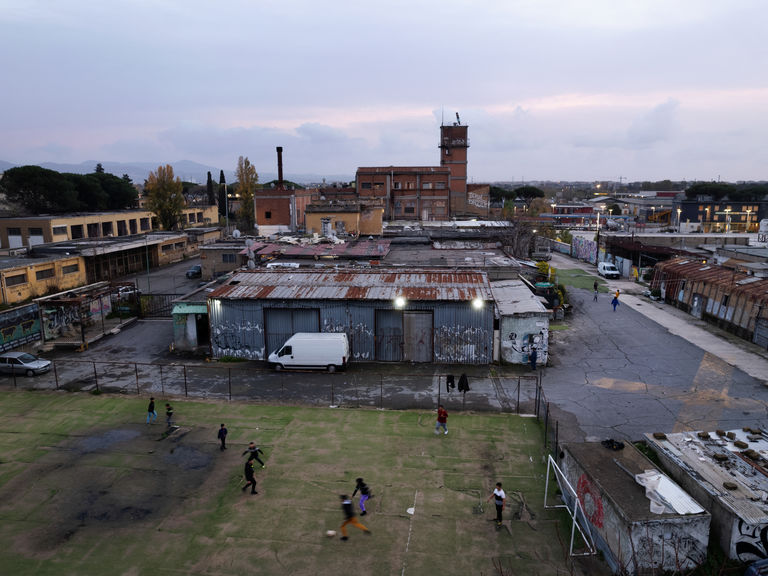Project Detail: GRAND HOTEL METROPOLIZ
Contest:
Swiss Storytelling Photo Grant 9th
Brand:
LuganoPhotoDays
Author:
Franco Buoncristiani
Status:
Finalist
Project Info
GRAND HOTEL METROPOLIZ
One of the many stories about the right to housing began in Rome, in 2011, when about two hundred people, made up of seventy families, occupied a former salami factory abandoned in 1978, a site of about 19,000 square meters on the eastern outskirts of the city. A dilapidated structure, between the popular neighborhoods of Tor Sapienza and Centocelle. The ethnic groups are aggregated into two main groups: North Africans, Africans (black Africa), South Americans, who have occupied the external buildings on the squares of the old factory; while the very compact and numerous Roma ethnic group occupied the two upper floors of the central building. Since 2011 the two groups have collaborated, worked hard starting from the indispensable infrastructures. Irregular immigration, abusive occupation, does not allow any rights to many of the inhabitants of the Metropoliz. It is the voluntary associations that work daily to guarantee basic services.
One of the many stories about the right to housing began in Rome, in 2011, when about two hundred people, made up of seventy families, occupied a salami factory (Fiorucci), abandoned in 1978, a place of about 19,000 square meters in Via Prenestina . A dilapidated structure, which looks like a fort complete with a tower, on the eastern outskirts of the city, between the popular districts of Tor Sapienza and Centocelle.
The ethnic groups are aggregated into two main groups: the first, North Africans, Africans (Black Africa), South Americans, who have occupied the external buildings on the squares of the old factory; the other, the Roma ethnic group, very compact and numerous, occupied the two upper floors of the central building. Since 2011 the two groups have collaborated, worked hard starting from the indispensable infrastructures, to then become a single mestizo community, overcoming tensions, also thanks to the mediation of a movement for the right to housing.
Irregular immigration, abusive occupation, does not grant any rights to many of the inhabitants of the Metropoliz: for example, they do not have access to public health care. Volunteer associations work daily to guarantee basic services, such as medical services, or after-school care for children.
Within this large building and thanks to the work of a museum curator, sensitive to the cause, street artists were involved in creating works on the walls of the building and soon transforming it into an open-air museum
Every Friday everyone participates in the cleaning of the rooms and corridors, where the works frame the doors of the apartments obtained as best they could, because on Saturday morning the Metropoliz opens its doors to those who want to visit the first inhabited museum in the world.
In 2021, the municipality of Rome surveyed 195 abandoned buildings and sites: 44.6% privately owned, 15.9% owned by the municipality, 27.2% owned by the state. However, very little has been done to make these facilities available to disadvantaged families.
A ruling by the court of Rome forced the municipality to compensate the property owner, a well-known builder who bought it at a judicial auction in 2009, with €28,000,000, for not having provided for the eviction.
The ruling has brought the Metropoliz, the first inhabited museum in the world, to the top of the list of evictions.


















